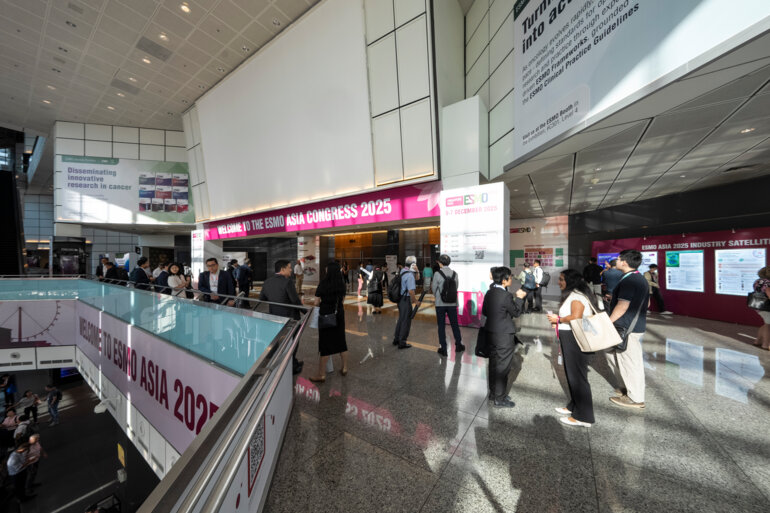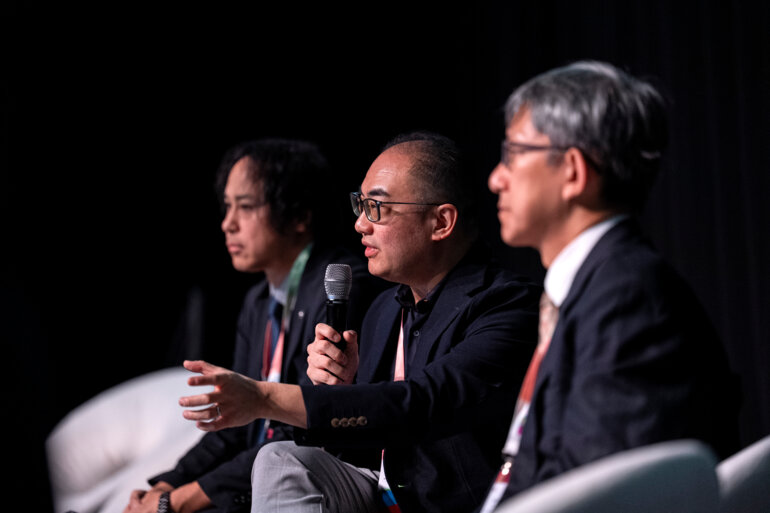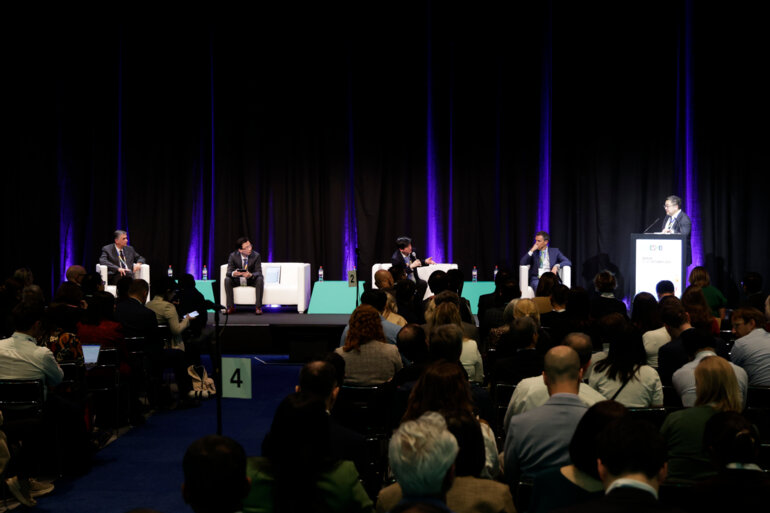In cancer research, academy and industry still work in silos but there is room for improvement, and more successful partnership can rise from an in-depth acknowledgement of needs, shared area of interests and drivers for change. A very first step towards this direction has been taken by the Clinical Academic Cancer Research Forum (CAREFOR) – a multi-stakeholder platform aiming to improve academic cancer research in Europe – which conducted an analysis of current models, challenges and effective strategies for academic-industry research together with selected industry representatives. The paper, which has been recently published on ESMO Open, (1) is a call to action to all oncology communities to join their efforts. Commenting on the paper, Professor Eric Van Cutsem from University of Leuven, Belgium, shares his perspectives on how investing in collaborative trials may be strategic for the benefit of patients.
Why is fruitful and transparent academic-industry collaboration relevant to face some challenges in the evolving landscape of cancer care? And what are the mutual benefits of collaborative trials from both an academia and industry perspective?
Tackling the complexity of cancer requires not to work ‘in silos’ as academic, clinical groups and industry each have their own expertise. It is therefore extremely important to have academic-industry collaborations to optimise resources while progressing research in oncology.
In the CAREFOR paper, studies such as the HERA trial, the STAMPEDE trial or the EORTC trial 1559 are mentioned as models to set successful academia-industry collaboration. In these trials, the collaboration between academia and industry turned out to be fruitful for many reasons. Firstly, the efficient academic networks could recruit patients adequately and the clinical expertise of the academic groups enabled to set up complex trials. In addition, the input of industry proved to be key for the organisation and set-up of the trial. Industry groups also shared the knowledge on the characteristics and preclinical data of the new anti-cancer medicines investigated in the studies so that patient populations could be selected more optimally.
Industry-driven and academia-driven trials present some differences but also some overlaps on how they are conducted. What are the major differences between industry-driven trials and those conducted by independent investigators in terms of 1) study design and 2) study aim? How do these differences impact on the scientific outcomes and on making research sustainable over time?
Different trials have different goals. Industry trials help to learn about the effectiveness, toxicity and safety of anti-cancer medicines, aiming to make them available and released on the market with a certain indication as soon as possible. In academic settings, trials are designed to investigate different endpoints including how to better select patients, understanding which patients may benefit from a treatment and patients reported outcomes (PROs). However, both industry and academic groups have the same purpose which is ultimately to increase the options of care and improve the outcomes for cancer patients. Knowledge resulting from any trial, whether it is industry or academia-driven, should be additive and complementary rather than competitive. Collaborative projects enable different experts to bring their insights under the same study design to answer one shared research question.
In the CAREFOR project, lack of a common language to understand each other’s priorities, resource constraints, legal and administrative complexity such as data ownership and sharing, and coordination issues are major challenges to set successful academic-industry collaborations. What are the possible strategies to address these aspects?
One possible strategy is to revisit established models of trials as a reaction to a more complex clinical trial landscape, where the understanding of the disease and treatment paradigms are evolving and changing at a faster pace in areas like immuno-oncology. Also, accelerating the generation and sharing of research data across networks may be crucial to improve academic-industry collaborations. Within this, interest is rising around new types of Real-World Data (RWD) sharing platforms which hold the promise to improve trial outcomes. Industry and academia need to work smarter together and agree on the right to use data for all legal purposes versus non-commercial purposes.
The paper also shows that legal procedures may represent a major barrier to translating academic studies into industry settings. For example, the EU Clinical Trials Regulation is subject to interpretation by local health authorities, meaning that in some countries there are restrictions to share clinical trial data with industry from a study that was originally submitted as a non-commercial trial to the relevant national health authorities. How does it impact on a successful academy-industry cooperation? And what are possible solutions?
A critical concern is indeed when a particular country’s health authority interprets the EU Clinical Trials Directive (CTD) as to ensure that clinical trial data cannot be shared with industry from a study that was initially submitted as a non-commercial trial to the relevant national health authorities. This adds a layer of complexity and risk to a company’s decision on whether to collaborate on a large Phase III trial with academic groups. Beyond having commercial vs non-commercial clinical trials only, a proposed novel solution would be for a third submission for non-commercial trials that haves the potential to be utilised for commercial purposes in the correct circumstances, and agreeing in advance about what needs to be in place with ethic committees and regulators - e.g. informed consent form (ICF) language, guarantees for money to be paid if the study is to be used in a filing, etc.-, in the event the non-commercial trial’s data be utilised for commercial purposes.
Based upon your experience, how is academic-industry collaboration perceived by oncologists today? Are industry-funded trials still demonised due to the potential of bias?
In the past, medical oncologists were more resistant to academic-industry collaboration that they are today. There is still some skepticism, but I think that the perception of academic groups toward industry has been improving due to an increased understanding that both independent /academic and industry research is needed for different reasons. However, we are still far from an optimal scenario of close collaboration between the two groups. Working in a constructive and collaborative spirit, avoiding misunderstandings and streamlining and optimising the legal framework can lead to a win-win scenario in drug development and in strategic trials for the benefit of patients.
References
- Stahel RA, Lacombe D, Cardoso F on behalf of the Clinical Academic Cancer Research Forum (CAREFOR), et al. Current models, challenges and best practices for work conducted between European academic cooperative groups and industry. ESMO Open 2020;5:e000628. doi: 10.1136/esmoopen-2019-000628







